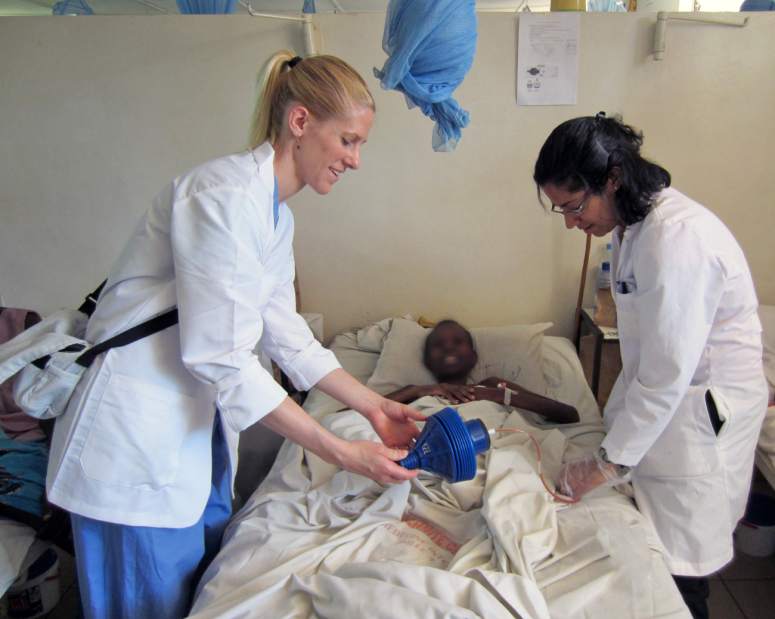By Joe Napsha
Tribune-Review, Greensburg, Pa.
An ambitious Yough High School graduate has developed an inexpensive negative pressure pump to heal acute and chronic wounds, a device that she says will be affordable to low-income populations because it does not need electricity or batteries to operate and has a unique, simplified design.
“My goal is to have the company that saves healthcare systems the most money globally,” said Danielle R. Zurovcik, 33, of Boston, a 1999 Yough High School graduate.
Zurovcik, the daughter of Andrew and Patricia Zurovcik of Sewickley Township, is the founder and chief executive officer of Boston-based Worldwide Innovative Healthcare Inc. , a Massachusetts Institute of Technology spinoff dedicated to providing affordable, technologically-appropriate medical devices to under-served populations.
Zurovcik’s fledgling company, founded in 2013, has created a low-cost, easy-to-use plastic pump — essentially a bellows toilet plunger without the handle and connected to tubing — that can be attached to open wounds filled with gauze or foam, then sealed with airtight tape that will hold for at least three days. The device, affordable to those earning less than $5 a day, increases blood circulation to the wound and removes infectious fluids from the wound, she said.
“I feel we have the most universal device design, and we do not need electricity,” to operate the wound pump, or batteries which must be replaced on a periodic basis and would be too expensive for many to use, said Zurovcik, who is her company’s only full-time employee.
Zurovcik has put her extensive education in mechanical engineering — a bachelor’s degree from Penn State University and her master’s and doctorate degrees from MIT — to good use in designing the Wound-Pump. She honed her business skills at Penn State by operating a bike messenger service on campus and at MIT, where she earned a minor in technology, innovation and entrepreneurship at the MIT Sloan School of Management.
The wound pump that Zurovcik has designed is based on technology proven in the 1990s at Wake Forest University in Winston-Salem, N.C. Her innovation is to reduce the cost of the product by about 90 percent compared to the typical negative pressure wound pumps currently available on the market.
Working with physicians from Brigham and Women’s Hospital in Boston, Zurovcik first used the device in November 2009 to treat patients in Rwanda in east Africa.
It was deployed again in Haiti, when an earthquake devastated that Caribbean nation in January 2010. This effort was in collaboration with Partners in Health, a Boston-based non-profit. Zurovcik was asked to deploy her Wound-Pump, since electricity was not available for the more than $3 million worth of electric wound therapy devices that were previously donated for efforts to assist Haitians affected by the earthquake.
They gathered 400 components and Zurovcik was joined by four clinicians who went to Port-au-Prince, the capital of Haiti. By the time her team of wound care specialists had arrived in Haiti in February 2010, it was too late to use the negative pressure wound therapy system on many patients because they had already been infected from their wounds, Zurovcik said. Still, they treated 300 to 400 patients.
“We had something promising,” Zurovcik said. “You don’t have to keep on pumping it. In the U.S., negative pressure wound therapy has been proven to save on average $10,000 per wound,” Zurovick said, mostly due to the shortened stay in the hospital. “You literally have to compress our Wound-Pump once every three days,” she added.
She won funding to do clinical trials in Rwanda in the summer of 2011 and now looks to conduct preliminary trials in Kenya, Cambodia, Brazil, Haiti, Rwanda, the Democratic Republic of Congo and the United States.
Zurovcik is convinced the market exists for her product. Negative pressure wound therapy is not currently available in most countries, and in the U.S., negative pressure devices treat 50,000 patients daily, but another 100,000 cases get denied. Battery-operated negative pressure wound therapy devices can cost as much as $100 a day and patients can be on the medical devices for 45 days, Zurovcik said.
“You have to show (the hospitalization insurance) that you’ve exhausted every other (treatment) method,” before a negative pressure wound therapy patient is covered by insurance, Zurovcik said.
Because the device will be a low-cost product, Zurovcik said the volume of sales will be critical to her company.
“Our goal is to make a company that can stand on its own two feet,” Zurovcik said.
Zurovcik hopes to start manufacturing the wound pump in the first quarter of next year. She is seeking U.S. manufacturers who will make the components for the pump. Her plan is to have one manufacturer assemble the device from parts made from several companies.
The process of manufacturing and assembling the device, proving its effectiveness through clinical trials, and taking it through the tests necessary to win approval from the U.S. Food and Drug Administration for use in this country, could carry a seven-figure cost — a million dollars or more, Zurovcik said. Clinical trials are needed for proving its effectiveness to doctors, but the FDA requires non-clinical tests, Zurovick said.
To acquire the necessary capital, Zurovcik said she will seek grants and is looking for “passive investors” in the health care field — those willing to invest with a long-term strategy, rather than seeking short-term profit. Those investors could come from within the U.S. or abroad, Zurovcik said.
She is not, however, interested in relinquishing the majority of her complete ownership in the company to an outside investor.
Zurovcik already has had fielded offers from investors who want to buy her company, but she fears her negative pressure pump might be put on the shelves and never reach the patients who need therapy if a larger company buys her out. In addition, her company has multiple future products in the pipeline, and “the Wound-Pump is a great first product to support long-term sustainable growth.”
“Our goal is not to sell the company,” Zurovcik said.














































































































































































































































































































































































